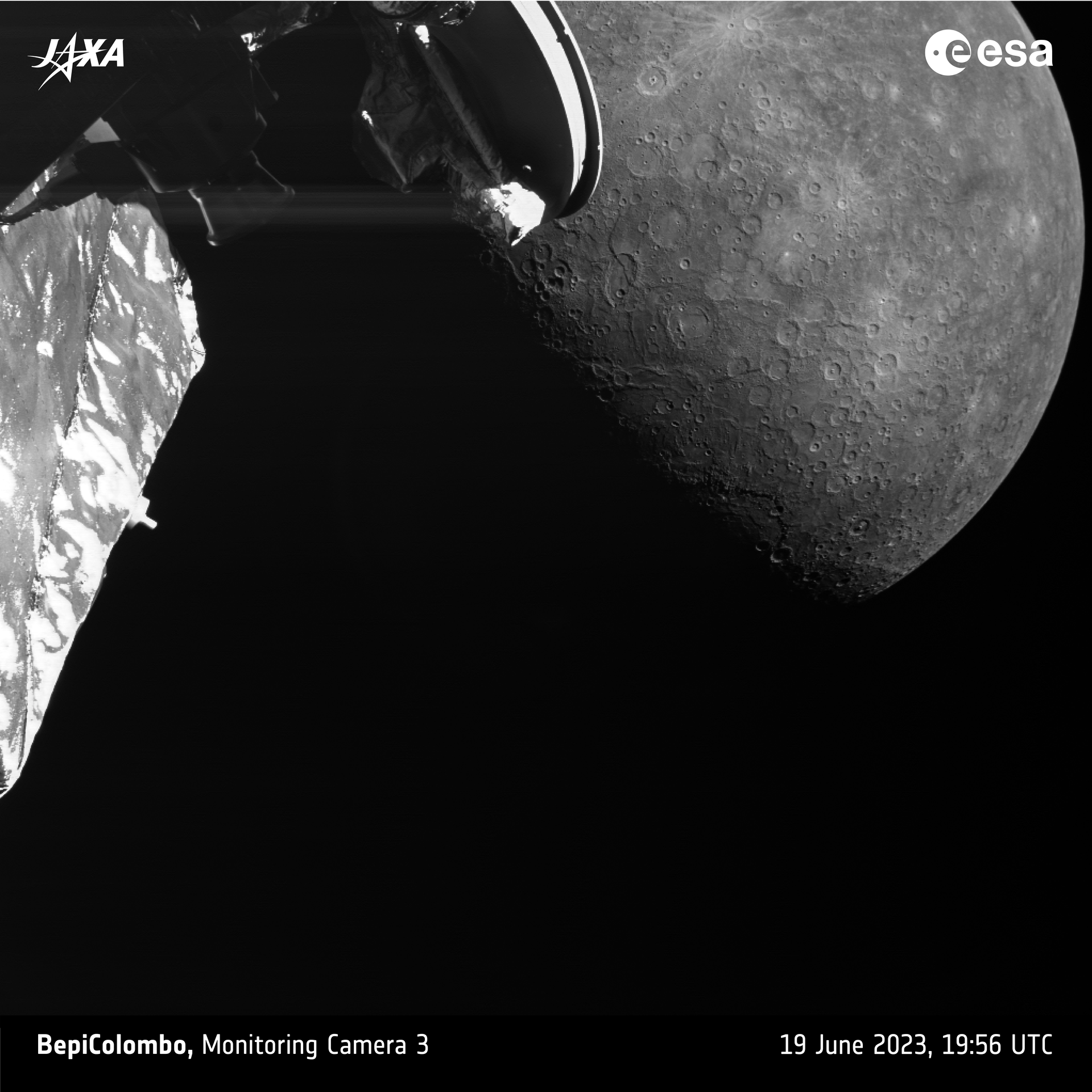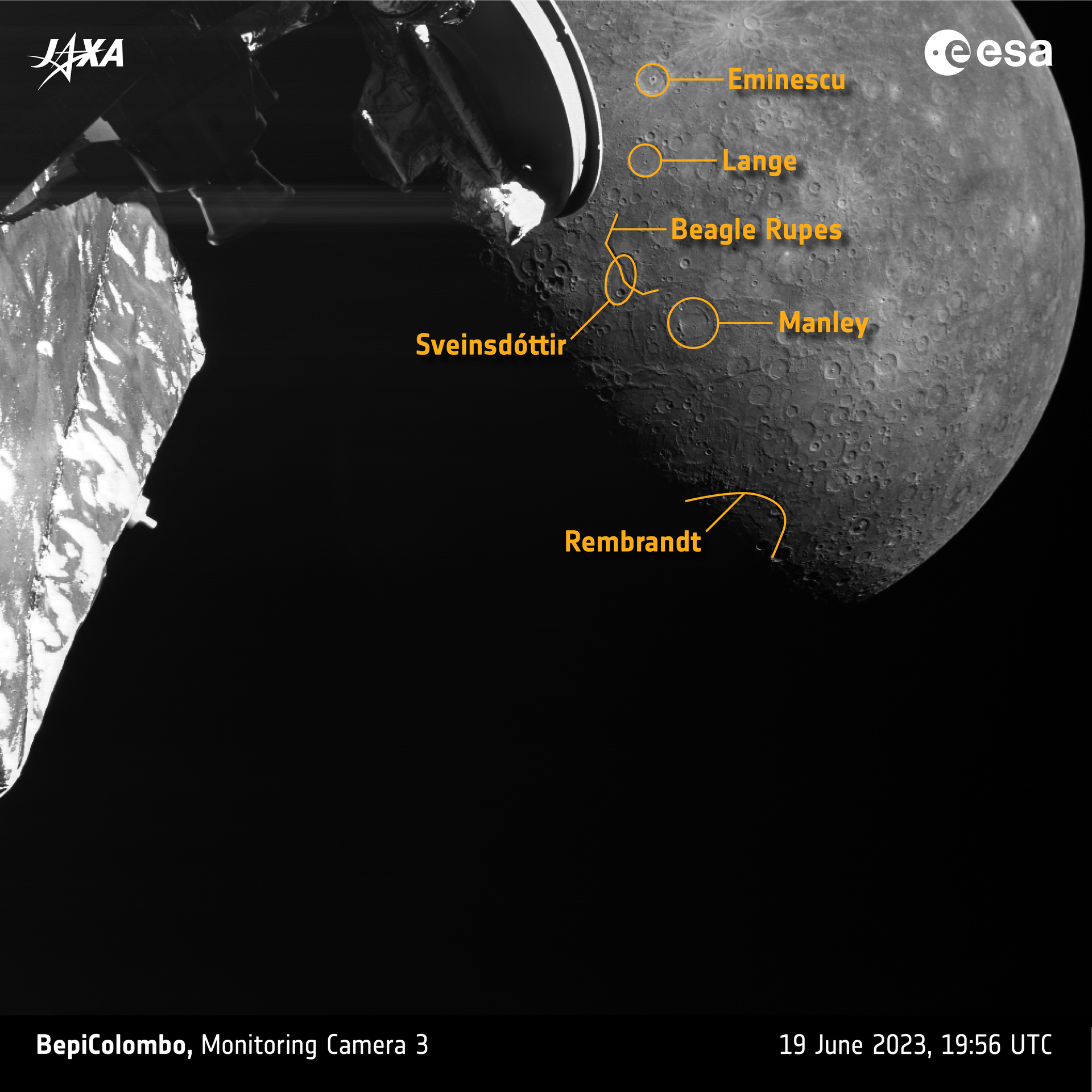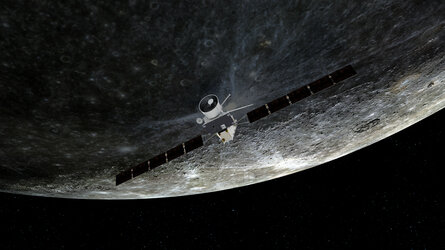


Geological bounty
A bounty of geological features, including the newly named Manley impact crater, are visible in this image of Mercury taken by the ESA/JAXA BepiColombo mission on 19 June 2023 as the spacecraft sped by for its third of three gravity assist manoeuvres at the planet.
The image was taken at 19:56 UTC (21:56 CEST) by the Mercury Transfer Module’s monitoring camera 3, when the spacecraft was just over 4000 km from the planet’s surface. Closest approach took place at 19:34 UT (21:34 CEST) on the night side of the planet at about 236 km altitude.
The back of the Mercury Planetary Orbiter’s high-gain antenna and part of the spacecraft’s body is also visible in front of Mercury in this image.
The image provides one of the widest views of the globe of Mercury seen during this flyby. It captures a wider view of the features seen in the closer image, such as the Beagle Rupes scarp and Manley Crater. It also includes the straight scarp Challenger Rupes, to the east of Beagle Rupes, that BepiColombo imaged during flyby 2. The image showcases the heavily cratered, ancient surface of the planet, with brighter streaks known as ‘rays’ emanating from younger craters.
The 258 km-wide Raditladi basin is visible between BepiColombo’s high-gain antenna and the top of the image. This is a relatively young basin, and so Mercury scientists continue to debate whether the smooth material on its floor is formed from rock directly melted by the impact or by later volcanic eruptions separated in geological time from the impact. Data collected by BepiColombo when it is in orbit around Mercury will be essential to solve this mystery.
The cameras provide black-and-white snapshots in 1024 x 1024 pixel resolution.
The image has been lightly processed to bring out the surface details of the planet.
Some imaging artefacts such as horizontal striping are also visible. In this view, north is to the upper left corner.
The gravity assist manoeuvre was the third at Mercury and the sixth of nine flybys overall. During its seven-year cruise to the smallest and innermost planet of the Solar System, BepiColombo makes one flyby at Earth, two at Venus and six at Mercury to help steer on course for Mercury orbit in 2025. The Mercury Transfer Module carries two science orbiters: ESA’s Mercury Planetary Orbiter and JAXA’s Mercury Magnetospheric Orbiter. They will operate from complementary orbits to study all aspects of mysterious Mercury from its core to surface processes, magnetic field and exosphere, to better understand the origin and evolution of a planet close to its parent star.
Click here for an annotated version of this image.





